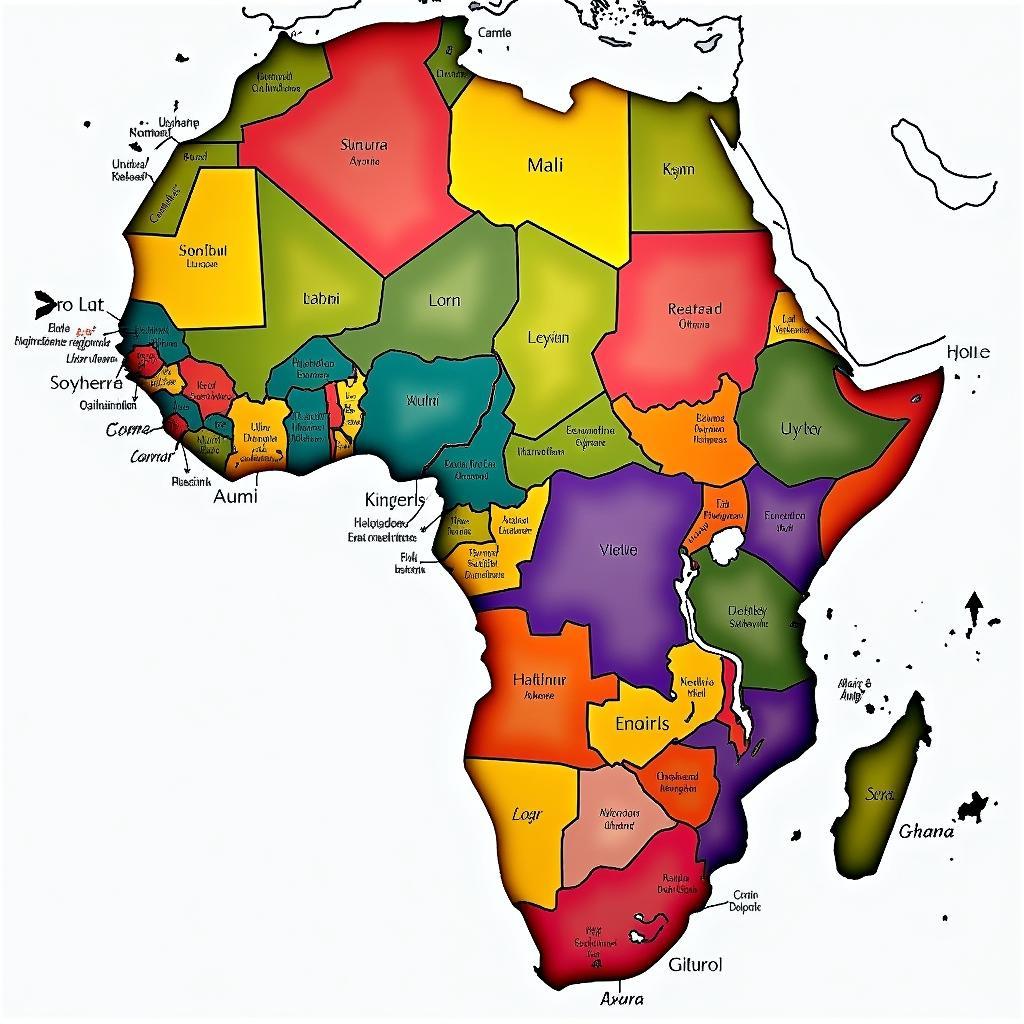Exploring the Diverse World of African Butterfly Species
Africa, a continent teeming with biodiversity, boasts a breathtaking array of butterfly species. From the vibrant wings of the swallowtails to the delicate patterns of the lycaenids, these enchanting insects paint the African skies with their vibrant hues. This article delves into the fascinating world of African Butterfly Species, exploring their diverse habitats, unique adaptations, and the crucial role they play in the ecosystem.  Diverse African Butterfly Species in their Natural Habitat
Diverse African Butterfly Species in their Natural Habitat
Unveiling the Beauty of African Butterfly Species
African butterfly species exhibit an astonishing range of sizes, colors, and patterns. Their wings, often adorned with intricate designs, serve various purposes, from camouflage and courtship displays to warning predators. These delicate creatures play a vital role in pollination, contributing to the health and diversity of African plant life. The diversity of African butterfly species is truly remarkable, with over 3,000 species found across the continent. This rich biodiversity is a testament to the variety of habitats, from lush rainforests to arid savannas, that Africa offers. african butterfly cichlid care
What are the most common African butterfly species?
Some of the most common African butterfly species include the African Monarch, the Citrus Swallowtail, and the African Migrant. These butterflies are often seen fluttering through gardens, forests, and even urban areas, adding a touch of magic to the African landscape.
How do African butterflies adapt to their environment?
African butterflies have evolved remarkable adaptations to survive in their diverse habitats. Some species have developed camouflage to blend seamlessly with their surroundings, while others have bright colors to warn predators of their toxicity. Some species, like the African Migrant, undertake long migrations to find suitable breeding grounds and food sources.
The Significance of African Butterflies in the Ecosystem
African butterflies play a crucial role in pollination, transferring pollen from one flower to another as they feed on nectar. This process is essential for the reproduction of many plant species, including crops that are vital for human sustenance. The presence of diverse butterfly species also indicates a healthy ecosystem. Their sensitivity to environmental changes makes them valuable indicators of habitat quality and biodiversity.
How do African butterflies contribute to biodiversity?
African butterflies contribute to biodiversity by acting as pollinators and as a food source for other animals. Their presence also adds to the overall beauty and richness of the African ecosystem.
Conserving African Butterfly Species for Future Generations
Protecting African butterfly species and their habitats is crucial for maintaining biodiversity and ensuring the health of the ecosystem. Habitat loss due to deforestation, agriculture, and urbanization poses a significant threat to these delicate creatures. Conservation efforts, including habitat restoration and sustainable land management practices, are essential for preserving the vibrant world of African butterflies. african cichlids tanganyika
What are the threats to African butterfly populations?
The biggest threats to African butterfly populations include habitat loss, climate change, and pesticide use. These factors can disrupt their life cycles and lead to population declines.
Dr. Anika Patel, a leading entomologist specializing in African butterfly species, emphasizes the importance of conservation: “Protecting these delicate creatures is not just about preserving their beauty, but also about safeguarding the vital role they play in the ecosystem. Their decline would have a ripple effect on the entire food web.”
 Conservation Efforts for African Butterflies
Conservation Efforts for African Butterflies
african cichlid breeding behavior
Conclusion
African butterfly species represent a vital part of the continent’s rich biodiversity. From their intricate wing patterns to their essential role in pollination, these fascinating insects contribute to the beauty and health of the African ecosystem. Conserving these delicate creatures and their habitats is crucial for ensuring their survival for future generations. By understanding and appreciating the diverse world of African butterfly species, we can all play a part in protecting these enchanting insects. african butterfly fish with angelfish
FAQ
- How many butterfly species are found in Africa? Over 3,000 species.
- What is the largest butterfly species in Africa? The African Giant Swallowtail.
- Do all African butterflies migrate? No, only certain species like the African Migrant undertake long migrations.
- What do African butterflies eat? Most adult butterflies feed on nectar, while caterpillars feed on leaves.
- How can I help conserve African butterflies? Supporting conservation organizations, planting butterfly-friendly gardens, and reducing pesticide use can all help.
- Where can I see African butterflies? National parks, nature reserves, and botanical gardens are great places to observe butterflies in their natural habitats.
- Are African butterflies poisonous? Some species have bright colors to warn predators that they are toxic or unpalatable. african clownfish
When you need assistance, please contact us via Phone: +255768904061, Email: [email protected] Or visit us at: Mbarali DC Mawindi, Kangaga, Tanzania. We have a 24/7 customer support team.


